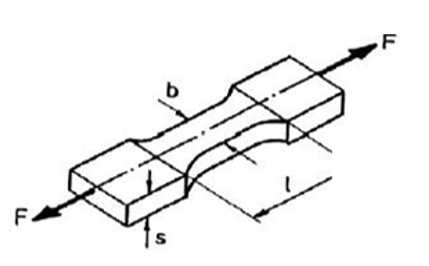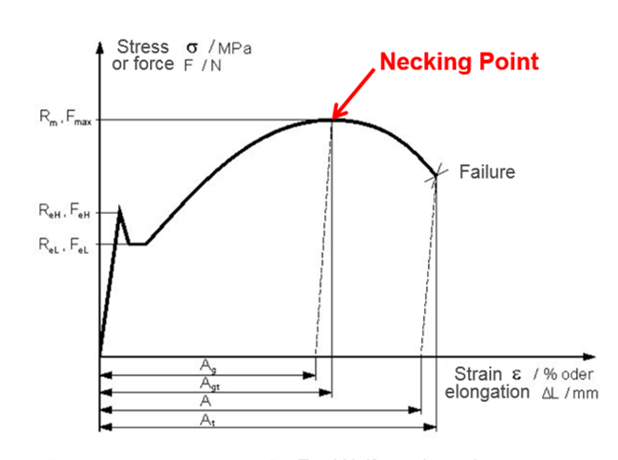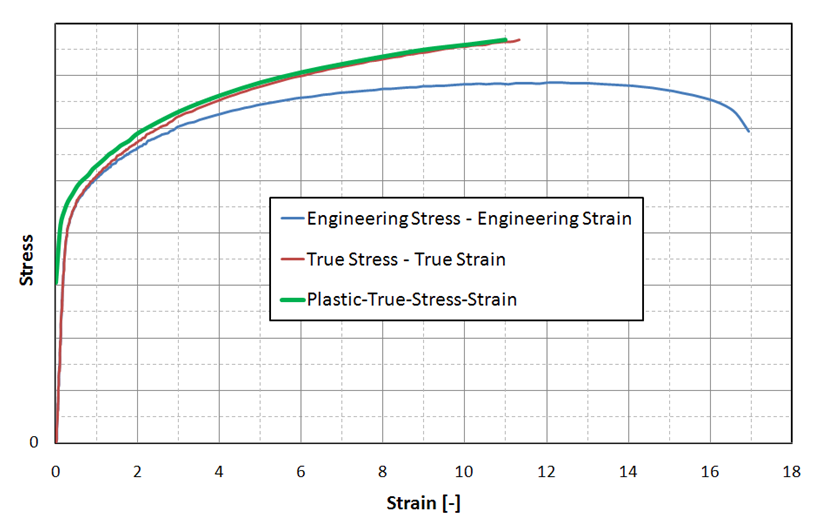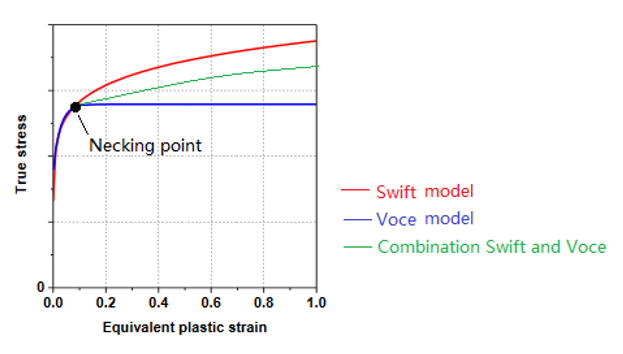Material Test |

|

|

|

|
|
Material Test |

|

|

|

|
Different material tests could result in different material mechanic character. The typical material test for metal is tensile test. With this test strain-stress curve, yield point, necking point and failure point of material could be observed. For example, Force (F) and Length (l) are measured, as shown below.

Engineer strain-stress curve could be generated by:
![]()
![]()
Where, S0 is the section area in the initial state and l0 is the initial length.
In this Force-elongation curve or engineer stress-strain curve, three point are important.
| 1. | Yield point: where material begin to yield. Before yield you can assume material is in elastic state (the Young’s modulus E could be measured) and after yield, material plastic strain which is non-reversible. |
| • | Some material in this test will first reach the upper yield point (ReH) and then drop to the lower yield point (ReL). In engineer stress-strain curve, lower yield stress (conservative value) could be taken. |
| • | Some material can not easily find yield point. Take the stress of 0.1 or 0.2% plastic strain as yield stress. Rp0.2 is usually taken for high stress steel and aluminum. |
| 2. | Necking point: where the material reaches the maximal stress in engineer stress-strain curve. After this point, the material begins to soften. |
| 3. | Failure point: where material failed. |

| Rm - Maximum resistance | Ag - Uniform elongation |
| Fmax - Maximum force | Agt - Total uniform elongation |
| ReH - Upper yield level | A - Failure strain |
| ReL - Lower yield level | At - Total failure strain |
True stress-strain curve which is requested in most materials in RADIOSS, except in LAW2, where both engineer stress-strain and true stress-strain are possible to input material data.
In the example below, find engineer stress-strain curve (blue) by using:
![]()
![]()
The result is true stress-strain curve (red). Plastic true stress-strain curve is shown in green, which plastic strain begin from 0. This green plastic true stress-strain curve is what you need, as in LAW36, LAW60, LAW63, etc.

The true stress-strain curve is valid until the necking point of the material. After the necking point, the material curve has to be defined manually for hardening. Using a different material law, RADIOSS will extrapolation the true stress-strain curve to 100%.
| • | Linear extrapolation: If stress-strain curve is as function input (LAW36), then stress-strain curve is linearly extrapolated with a slope defined by the last two points of the curve. It is recommended that the list of abscissa value be increased to a value greater than the previous abscissa value. |
| • | Swift and Voce: After necking point, use one of the following equations to extrapolate the true stress-strain curve. |
Swift model:
![]()
Voce model:
![]()
Combination of Swift and Voce model (LAW84):

